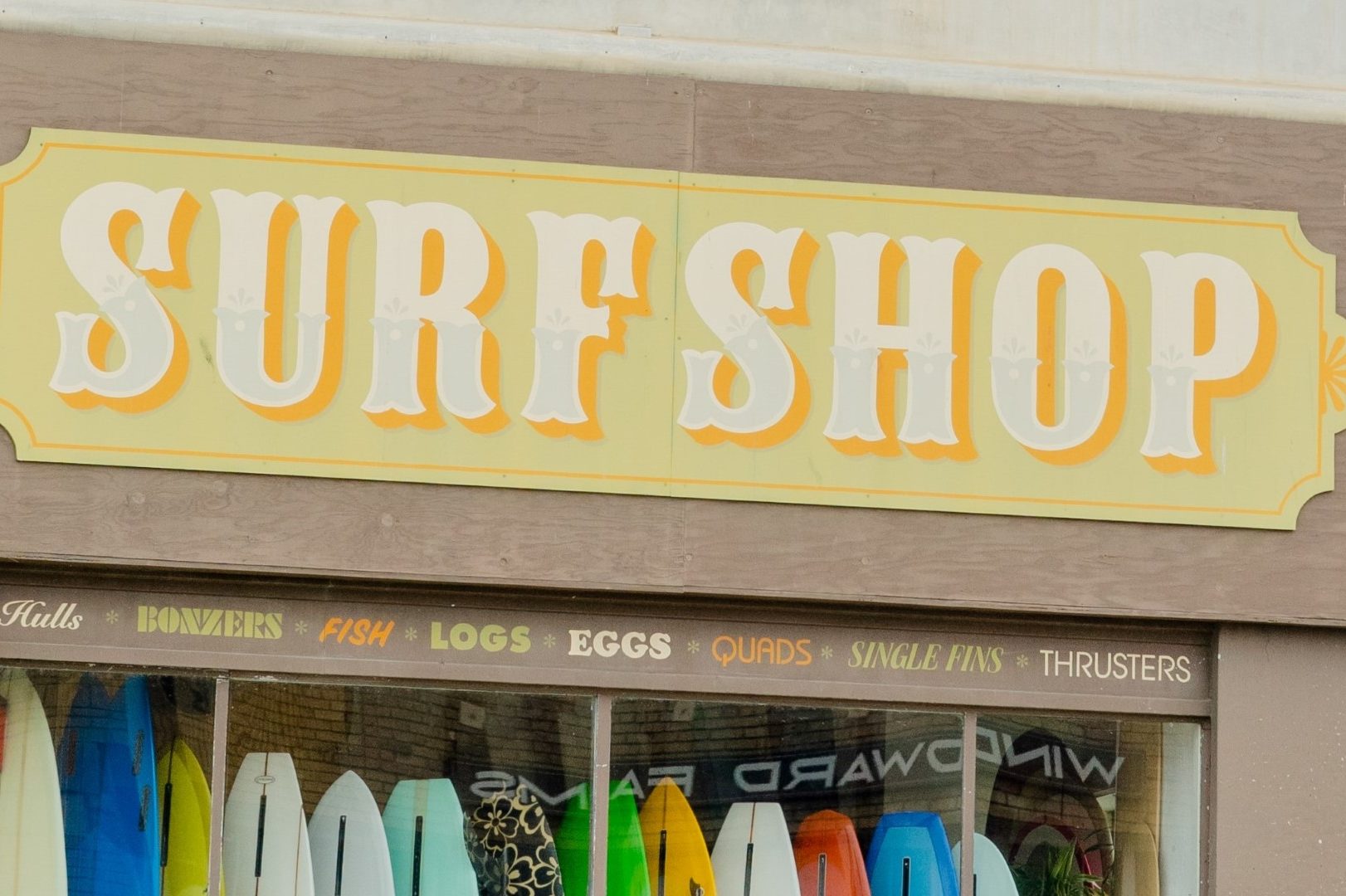One of my favorite things about Surfing as a sport is the lack of accessories. Many other sports have an endless supply of accessories to spend money on, but Surfing has a relatively small number of necessary accessories, which is great news if you are thinking about getting into surfing.
This is a list of my favorite accessories, the best thing is almost every one of these is multipurpose. Surfing is just one of the activities that will benefit from most of the accessories listed below. No one likes having a closet full of expensive gear like Snow Goggles or Mountain Bike Helmets that only have one use.
Pre Surf
I talk about this all the time, but the more waves you catch the more fun you will have, and surfing is all about having fun. Fortunately, there are some great accessories for improving your surfing without going to the beach, so the next time you get out in the water you will be catching more waves.
If you consider how much time and effort you put into getting to the beach, getting out in the water, and then getting onto a wave, it quickly makes sense to have some accessories that you can use in or around your home to make sure you get the most out of your time in the water.
Indo Board
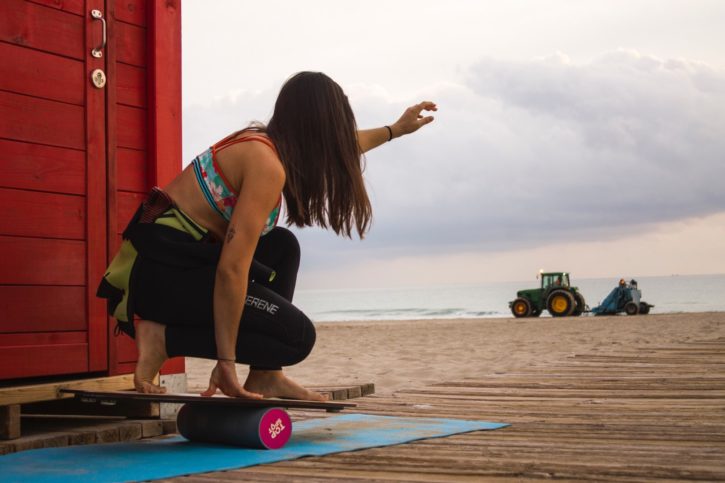
The Indo Board is the original balance board, designed by a surfer with the goal of making training and exercising FUN. Indo boards are a fantastic accessory for every level of surfer as they allow you to improve your board balance and train those muscles before you get to the beach. You only need a small space to use an Indo Board, this is a great way to make a real improvement to your surfing whilst having fun, and without having to leave the living room.
I use my Indo board regularly. I really like how it helps loosen my muscles. Whenever I surf with tired or tight muscles in my legs and core I surf poorly. Using the Indo board allows me to train these muscles, often at home whilst watching TV.
Swelltech Surfskate
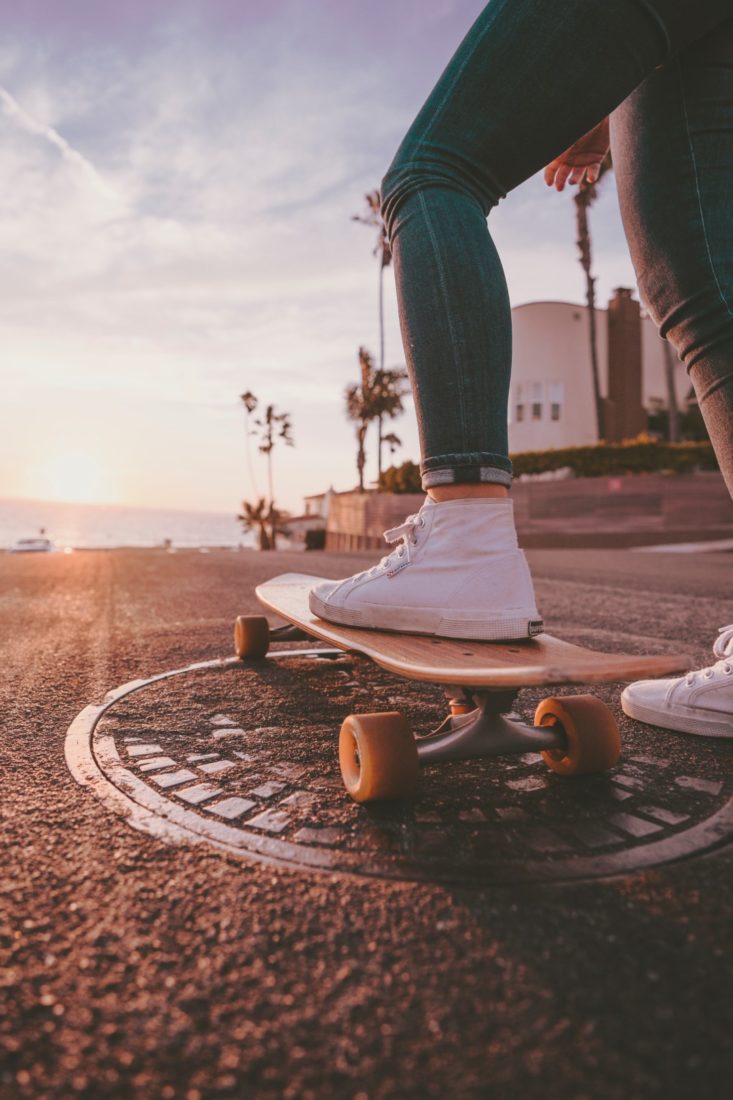
Swelltech Surfskate skateboards are designed to mimic the movement of a surfboard by having a completely free motion front truck, and a standard more rigid truck in the rear. What this means is that you can actually practice surfing maneuvers at home, including pumping for speed and deep carves. This is very different to a normal skateboard, and the motion translates incredibly well to your surfboard.
If you are finding that you struggle to have enough speed on a wave, and that you cannot get past the whitewater, or the whitewater catches up to you then this accessory is my top advice for how to improve. The mechanics and motions to pump a surfboard to gain speed are difficult to understand without practice, and it takes a lot of practice.
I am not exaggerating when I tell you that learning this skill on a Surfskate skateboard can take years off your surfing progression.
In addition to speed, the Surfskate will allow you to practice your carving motion. The use of the upper body in Surfing is unlike many other board sports, and the Surfskate allows you to practice this repeatedly and commit it to muscle memory.
If you are a surfer who is standing up and riding along waves, I strongly recommend you add a Surfskate to your routine. You can thank me later.
TRX
If you have been to a gym in the last 10 years you will no doubt have seen or used a TRX. The TRX Go is the original suspension trainer and is fantastic for full-body resistance training. Strengthening your core, back and shoulders will provide huge dividends when you are out paddling in the surf. These are also fantastic for mobility exercises if you have had any injuries or pain in your shoulders when paddling.
The TRX comes with a soft hook which allows you to attach it to any standard door and get a workout. This is great for people who are renting or who travel a lot to be able to get a solid workout without any heavy equipment or permanent attachments.
Surfing
If you are lucky enough to live next to the surf in a lovely warm climate and have skin that does not get sunburned then you might not want many accessories for going surfing. However, if you are more like me and going surfing requires a drive, and throughout the year a transition from cold water to hot sunny days then read on. The items below are going to make your surfing far more comfortable.
Getting to the Surf
Surf Key

This item depends entirely on your car make and model. If you are going to be leaving your car at the surf, you need a way to lock it and you need a way to make the key safe. Most modern cars have keys which are full of electronics, and do not like water! I would recommend you do a google search for your car make and ‘surf key’.
A dumb surf key will have no electronics, so it cannot open your car remotely and will not be able to start the car due to the immobilizer. You can either take your surf key out with you as most board shorts and wetsuits have key attachments or if you prefer not to do that I recommend the Kidde Car Key Lockbox below.
Kidde Car Key Lockbox
Taking your surf key out in the water has a few challenges. First, there is the risk of losing the key in the water. My chest zip wetsuits all have an elastic strap under the chest zip which I feel comfortable using, however, I do not feel safe attaching my car key in the same way inside a pocket on my board shorts. In a Bikini, there are even fewer options! Even if you are comfortable taking your key out in the surf, you need to make sure you have access to some fresh water to rinse it before putting it in your car lock.
If you prefer to leave your key on dry land, you can either hide it under the front/back bumper where every car thief will first look, or you can use a solid lockbox. I did my research before choosing the Kidde KeySafe, and the safe style combination lock was by far the best option. This is one of the few key lockboxes which I could not find a tutorial video of how to crack!
You can set your own combination for the dial, just make sure you read the instructions carefully and practice a few times before you put your key in as there is a precise process to opening these lockboxes and it is easy to get wrong.
I personally put my Surf Key in the lockbox, this way if my lockbox is compromised, the thief will only be able to open the car but not start the engine. I usually lock this to either a tow hook under the back of my car, or through a spoke in one of the wheels. I often see them locked to the drivers door handles, but I feel the tow hook and wheel are more solid attachment points.
FCS Soft Roof Racks
FCS Soft Roof Racks allow you to safely put your surfboards on the roof of any car. This is amazing if you don’t want full-time roof racks, or you sometimes use a rental or a friends car with your surfboard.
Everything you need to attach several surfboards to your roof is included, and installation or removal only takes a few minutes. The racks are lightweight, so a great addition to your luggage if you are heading away on a surf trip that may involve a car without permanent roof racks.
Board Bag
One of the great things about soft top surfboards is that you usually don’t need a board bag. Unlike a conventional fiberglass surfboard, you can safely attach your soft top to the roof of a car, or store it leaning against the wall in your garage without any fear of damage.
There is however a time when a board bag is necessary. The first is to protect other objects, such as the interior of your car from your board. Most people don’t like salt water and surf wax on their car upholstery, so unless you are using roof racks you should consider a basic board bag like the OCEANBROAD Board Bag which is available in sizes from 6’0 up to 10’0 and has a convenient internal pocket for fins and wax.
The other time you will want a board bag for your soft top surfboard is when traveling. Most major airlines allow surfboards to be carried at no extra cost as part of your luggage allowance, however, there are countless stories of damaged surfboards after a trip in the airplane hold. Fortunately, your soft top is a lot more robust, and with a little added protection from a padded board bag there is no excuse to not take your favorite board on your next beach vacation. I would recommend a bag with additional padding such as the Abahub Premium Surfboard Bag for single boards, or the Pro-Lite Wheeled Surfboard Bag if you want to transport multiple boards.
Getting in the Surf
I like to surf year-round, and I like to be comfortable in the water. This requires me to own a full spectrum of ‘water clothing’ for a range of different temperatures.
The range of Wetsuits, Rash Tops (rashies), Board Shorts and Bikinis are endless and I would not be able to do the subject justice in one short article. I do however have some advice to help you with your purchase decisions in this area.
Wetsuits
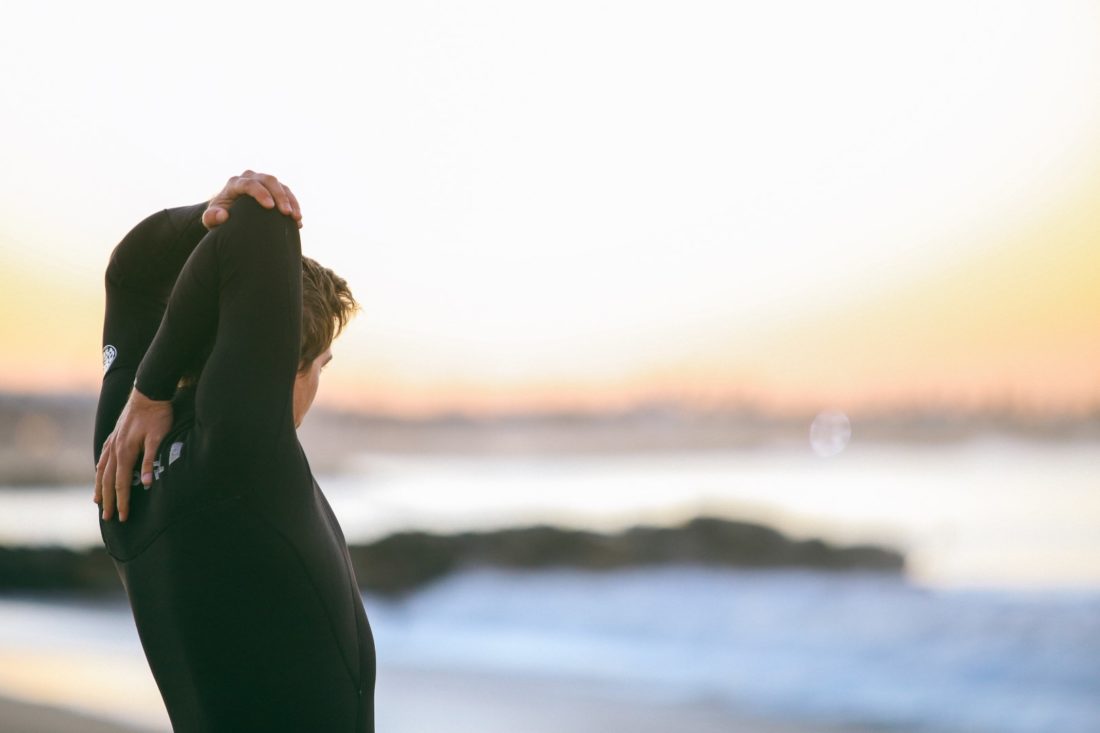
First, a bit of Wetsuit terminology you need to know before shopping. Wetsuit thickness is expressed in one or two numbers which represent how many mm thick the material is. If two numbers are used, the first and larger number is the thickness of the main wetsuit body, and the smaller number is the thickness of the more flexible material used for the shoulders and arms. The thickness you need will be based on the water temperatures you will be surfing in, and each wetsuit manufacturer provides a chart for their wetsuits.
- Chest Zip vs Back Zip – You put on a chest zip wetsuit by pulling it up over your body like a tight dress, then the top of the wetsuit is pulled over your head from behind and zipped across your chest. A back zip is more conventional and has a zip running down the length of the back with a cord attached for you to use the zip. There are a few zipless wetsuits available also, with incredibly stretchy material on the neck and shoulders. I personally only buy chest zip wetsuits as they have greater flexibility and a better water seal.
- Shorty vs Steamer – Wetsuits have various cuts available. A steamer wetsuit is the warmest, and has full-length arms and legs. A shorty or springsuit has either short arms, legs or both for greater flexibility in warmer water. Additionally, there are also wetsuit leggings, tops, sleeveless and bikini cut options available for warm water protection. I prefer long arms on my spring suit for additional sun protection.
- Taped Seams – This refers to all the stitched seams being sealed, preventing water ingress and adding additional strength and durability.
I have 3 different wetsuits, ranging from a 2mm short leg up to a 5/3 (5mm thick on the body, 3mm thick on the arms and shoulders) full-length steamer. A good wetsuit normally lasts me about 2 years with heavy use and good care. Wetsuit technology changes rapidly, every year one of the major companies release a new material or manufacturing process which makes noticeable improvements. If you have an old wetsuit that is not as warm or flexible as you would like, go to your nearest surf store and try on a high-end modern wetsuit. You will be surprised how well they fit and stretch.
My top wetsuit tips are:
- You get what you pay for. A good wetsuit makes a huge difference to your comfort in the water, and I would strongly recommend you buy the best wetsuit in your budget if you surf in cold water.
- Flexibility is King. Paddling is enough of a workout, without adding the resistance of a wetsuit around your shoulders and arms. When wetsuit shopping, grab the wetsuit at the shoulder and cuff and give it a good stretch. Try on the wetsuits with the most stretch.
- Taped Seams are a must for a winter wetsuit. This will keep the wetsuit a lot dryer and extend its life. My 2mm summer does not have this, as it gets a lot more use I prefer to buy a more budget-friendly summer suit and invest more in my heavier winter wetsuit.
- Care for your wetsuit properly. After every surf, you should rinse your wetsuit in cool fresh water, and then fold it in half to hang it in the shade inside out. Do not hang a wet wetsuit on a coat-hanger, the weight of the suit when wet will cause damage to the shoulders, and a coat-hanger should only be used when dry. Do not leave a wetsuit in the sun, especially inside out. The UV rays will damage the stitching and materials, and can even cause the glue to melt.
Booties, Gloves and Hoods
For extra cold water, you might want to consider these items. If you are planning on buying any of these I would recommend:
- Booties. Buy dedicated surfing booties with at least a separate split for your big toe as this will drastically increase the feeling of the board through your feet. I would buy one size smaller than your normal shoe size, as you want them to remain tight once you are in the water. I like the ONeill Superfreak Tropical Split Booties which I can use in warm water when surfing over reefs, or to add a bit more warmth in winter.
- Hoods. Ensure your buy a hood that can be taken off in the water but will remain attached. Ideally a hood will be worn when paddling out, but then pushed back of your head once you are clear of breaking waves to allow you greater visibility and flexibility. The ONeill Psycho Hood is perfect as it has a drawstring to allow you to loosen the fit when you want to push the hood back off your head.
Board Shorts & Bikinis
This is pretty self-explanatory, and you should buy whatever you feel most comfortable in. For board shorts, they need to be above the knee, and usually the shorter the better to prevent you from getting hooked up whilst taking off. For Bikini’s, make sure you get something that will stay on a wipeout. There are plenty of major brands making surfing/sport orientated bikinis these days.
Rash Tops
If you are going to be surfing somewhere warm enough for just shorts or a bikini, consider buying a rash top. These are thin, flexible and UV resistant tops which will provide you with sun protection, keep you warm and help prevent any skin abrasions from lying on your surfboard. Soft top surfboards are a lot softer than a fiberglass board, but you can still get pressure points and abrasions from them. If you are a guy with a bit of hair on your front, then a rash top will also prevent you from sticking to the wax!
GoPro
One of the greatest ways to improve your surfing is to see footage of yourself surfing. The best footage will be taken from the beach with a large lens, a great option for professionals but often not realistic for the rest of us. The next best option is a GoPro mounted to the nose of your surfboard.
The new GoPro 8 is waterproof down to 10M without a case and has a superwide lens to ensure your whole body is in the frame when surfing. I would recommend that you add the official Floaty accessory for an extra bit of security when using it out in the surf.
The best part is that GoPro also makes a mount specifically for Soft Top Surfboards.
Sun Protection
Sun protection is a real concern for surfers. Those powerful UV rays are reflected back off the water all around you and your exposure is multiplied compared to being on land.
Hat
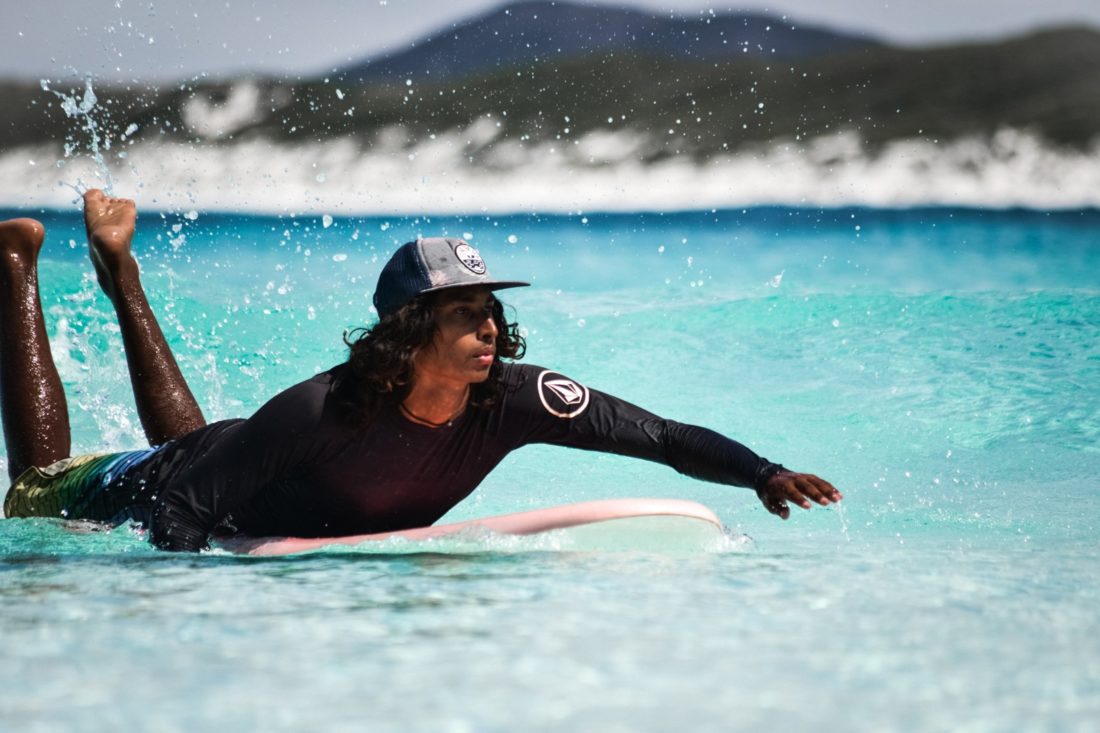
When you are out in the surf your hair will be wet, causing it part and expose your scalp to the sun. The best protection for your head on a sunny day is a hat, and using a hat designed for surfing has a huge advantage.
I prefer the FCS Surf Bucket Hat as it is made of quick-dry material, has a comfortable and easy to adjust chin strap and an optional leash for bigger surf days. In the event that this hat does come off in the surf it is buoyant and will float to the surface. It also has a short brim, providing just enough sun protection, whilst being easy to push up and out of your field of vision when paddling for a wave.
Sunblock
There are a few things you need from your sunblock when out surfing. It needs to be highly water-resistant, a high SPF (50+) and be reef safe. Unfortunately, the chemicals used in many sunblock’s are destroying marine life over the world.
I use the Sun Bum Unisex Clear Zinc liberally across my face, neck and ears and the Sun Bum Moisturizing Lotion for the rest of my body. Both of these are SPF50 and reef safe.
Post Surf
A good surf is a workout, and by the time I get out of the water I am usually pretty tired and hungry. I want to get dry, comfortable and fed as soon as possible.
Towel Robe
This extra-large changing poncho towel is perfect for getting your wetsuit on and off at the beach in comfort. Forget trying to get changed by wrapping a towel around yourself or finding a change room. Using a robe/poncho changing towel is a game-changer for watersports. Quick-drying microfibre and an extra-large fit make this one my favorite.
Cliff Bars
I always keep a supply of Cliff Bars in my car. These are the real deal, and when you come in from a long surf it is great to have a healthy, tasty and high energy source of food. I usually buy the mix pack for variety, but Crunchy Peanut Butter is my favorite flavor.
